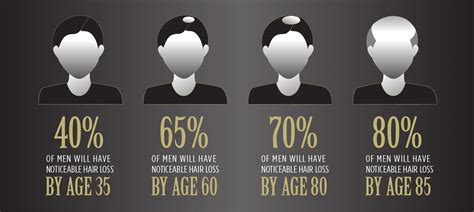Introduction
Baldness, a common concern among men, has shrouded in mystery and misinformation for centuries. One enduring myth suggests that shaving your hair can halt or even reverse hair loss. But is there any scientific basis to this claim? This comprehensive article delves into the truth behind the 10,000-year-old myth, exploring the causes of baldness, the efficacy of shaving, and alternative treatments.

Understanding Baldness: The Roots of Hair Loss
Baldness, also known as alopecia, is characterized by the loss of scalp hair, affecting an estimated 50% of men by the age of 50. The primary cause of baldness is androgenetic alopecia, or male-pattern baldness, which is genetically inherited and influenced by testosterone levels. As men age, the hormone dihydrotestosterone (DHT) binds to hair follicles, causing them to shrink and produce thinner, shorter hair until they eventually stop growing.
Other causes of hair loss include:
- Telogen effluvium: A temporary condition caused by stress, illness, or rapid weight loss.
- Alopecia areata: An autoimmune disorder that causes patchy hair loss.
- Scalp infections: Infections like ringworm can lead to hair shaft breakage and hair loss.
- Medication side effects: Some medications, such as chemotherapy, can cause temporary or permanent hair loss.
Debunking the Shaving Myth: Hair Growth and Regeneration
Shaving has no direct impact on hair growth or the hair follicle’s life cycle. Hair is produced by the hair follicle, a small tube-shaped organ in the skin that produces hair shafts. Trimming or shaving hair does not affect the follicle, which continues to function and produce hair according to its genetic programming.
Exploring Alternative Treatments for Baldness
While shaving does not prevent baldness, several medically proven treatments can slow down hair loss or promote hair regrowth:
1. Minoxidil
Minoxidil, a topical medication, is FDA-approved for the treatment of male and female pattern baldness. It works by stimulating hair follicles to produce thicker, fuller hair.
2. Finasteride
Finasteride, an oral medication, is prescribed for male-pattern baldness. It inhibits the conversion of testosterone to DHT, the hormone that causes hair follicle shrinkage.
3. Laser Therapy
Low-level laser therapy stimulates blood flow to the scalp, promotes hair follicle growth, and slows down hair loss.
4. Scalp Micropigmentation
Scalp micropigmentation is a cosmetic procedure that involves depositing pigment into the scalp to create the appearance of denser hair.
Conclusion: Empowering Informed Decisions
The myth that shaving your hair can prevent baldness has persisted for centuries, but it lacks scientific evidence. Understanding the causes of baldness and exploring alternative treatments empowers individuals with informed decision-making. While shaving may not be a solution for hair loss, it can enhance personal grooming and self-esteem if desired.
